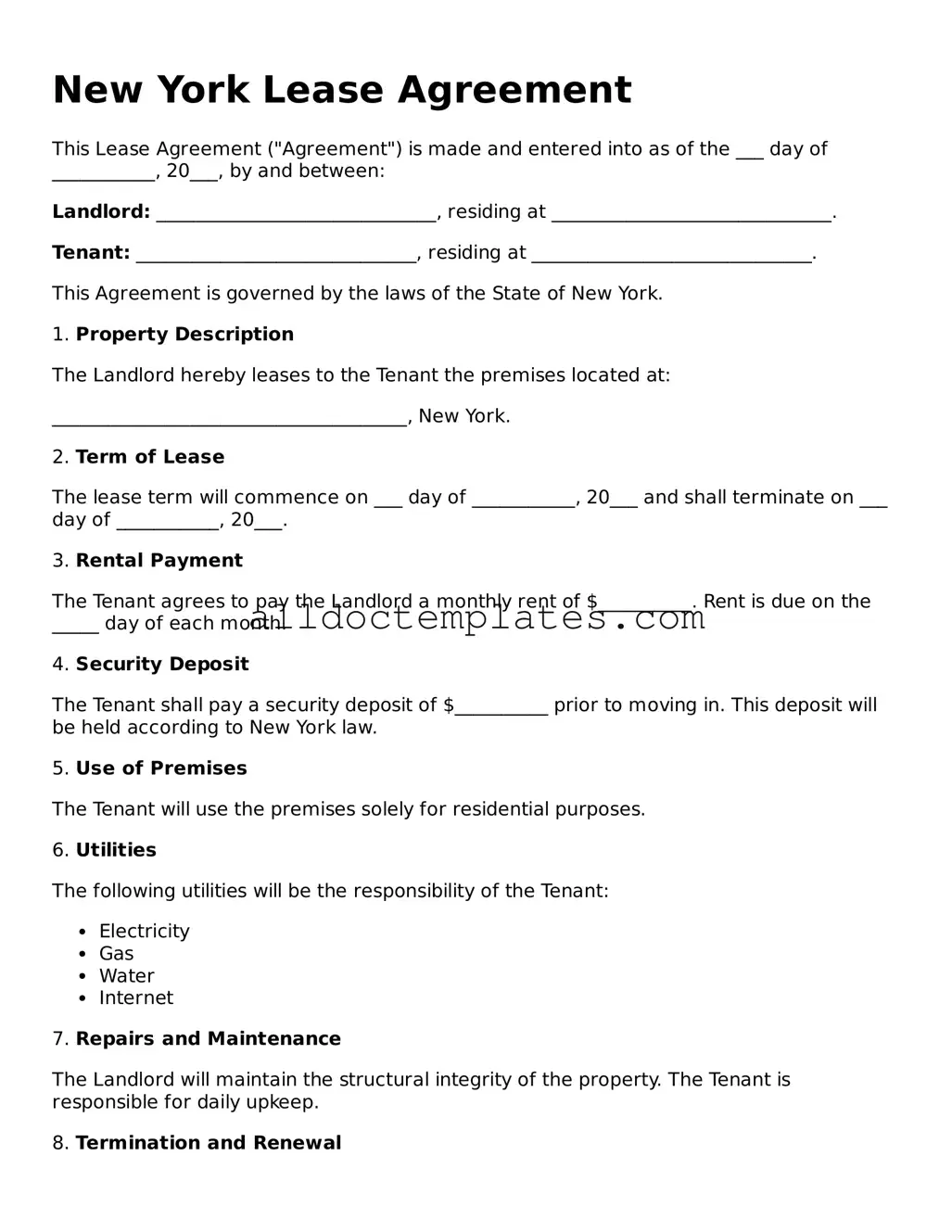New York Lease Agreement
This Lease Agreement ("Agreement") is made and entered into as of the ___ day of ___________, 20___, by and between:
Landlord: ______________________________, residing at ______________________________.
Tenant: ______________________________, residing at ______________________________.
This Agreement is governed by the laws of the State of New York.
1. Property Description
The Landlord hereby leases to the Tenant the premises located at:
______________________________________, New York.
2. Term of Lease
The lease term will commence on ___ day of ___________, 20___ and shall terminate on ___ day of ___________, 20___.
3. Rental Payment
The Tenant agrees to pay the Landlord a monthly rent of $__________. Rent is due on the _____ day of each month.
4. Security Deposit
The Tenant shall pay a security deposit of $__________ prior to moving in. This deposit will be held according to New York law.
5. Use of Premises
The Tenant will use the premises solely for residential purposes.
6. Utilities
The following utilities will be the responsibility of the Tenant:
- Electricity
- Gas
- Water
- Internet
7. Repairs and Maintenance
The Landlord will maintain the structural integrity of the property. The Tenant is responsible for daily upkeep.
8. Termination and Renewal
The Tenant must provide ___ days' written notice to the Landlord if they wish to terminate this Agreement. Renewal options will be discussed at lease end.
9. Governing Law
New York law will govern the interpretation of this Agreement.
10. Signatures
By signing below, both parties agree to the terms of this Lease Agreement.
Landlord Signature: ______________________________________ Date: _____________
Tenant Signature: ______________________________________ Date: _____________
